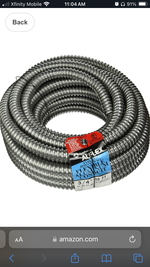Travmon
Well-Known Member
- Joined
- Feb 23, 2019
- Messages
- 687
- Reaction score
- 4,596
So I am in the middle of a major remodel on the house I purchased a few years ago. I moved a few walls and now need to address the electrical. The whole house is wired in aluminum flex tubing and I now need to extend some runs to fit the new wall design. The Question I have is about splicing wires together in the wall ? What is legally acceptable and my best route to accomplish.? I really don’t want to pull new wire from the panel. Thoughts ?? Thank you






